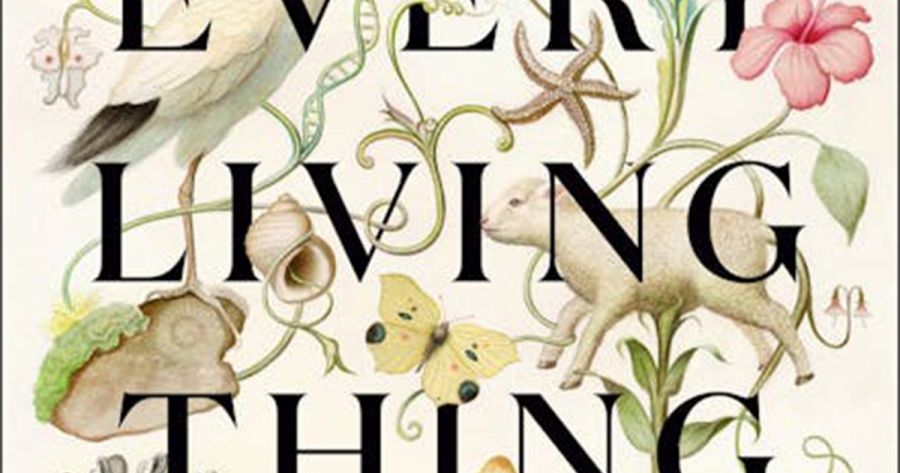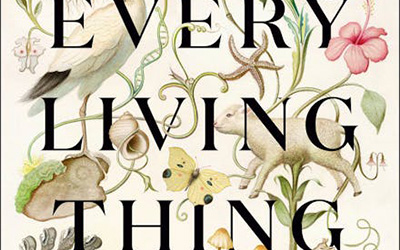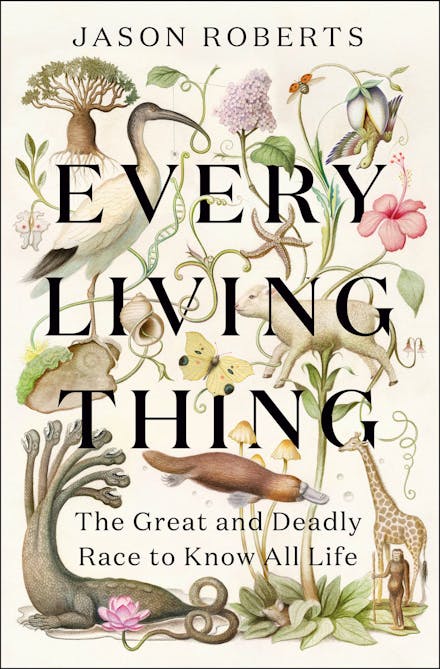
- Free Article: No
- Review Article: Yes
- Article Title: Flashes of insight
- Article Subtitle: How we think about the natural world
- Online Only: No
- Custom Highlight Text:
There is something intrinsically appealing about patterns and order. Give a child a tin of buttons and they will immediately organise them by colour, size, or shape. Collect a bucket of shells from the beach and most people do the same thing. Some might choose the prettiest, largest, and most striking representatives of each type and display them prominently; others might cluster them by species and grade them in their variations from smallest to largest, darkest to lightest. Few will give much thought to the creatures that once inhabited them, the environments they came from, or how they lived.
- Featured Image (400px * 250px):

- Alt Tag (Featured Image): Danielle Clode review ‘Every Living Thing: The great and deadly race to know all life’ by Jason Roberts
- Book 1 Title: Every Living Thing
- Book 1 Subtitle: The great and deadly race to know all life
- Book 1 Biblio: Riverrun, $36.99 pb, 419 pp
- Book 1 Cover Small (400 x 600):

- Book 1 Cover (800 x 1200):

- Book 1 Readings Link: https://www.readings.com.au/product/9781529400472/every-living-thing--jason-roberts--2024--9781529400472#rac:jokjjzr6ly9m
As Roberts illustrates, neither man had particularly auspicious beginnings. Both were from modest, conservative backgrounds, with good prospects for inheriting their fathers’ secure but uninspiring careers. Neither showed any early academic talent or genius. By the end of their careers, Linnean taxonomy was the basis for a framework that would classify all living things – not just by genus and species, but also by kingdom, class, and order. Buffon was beloved as the bestselling author of his multi-volume Histoire Naturelle (1749-1804). In Paris, his funeral parade drew tens of thousands in a spontaneous display of national mourning.
By and large, much of our effort to understand our complex world is through simplification and heuristic solutions – sub-optimal but good enough models that approximate the answer. Linnaeus’s success was founded on a similar process. Many had tried to develop a system to classify plants and animals in an accurate and meaningful way, but in truth this task is far too big for a single person in one lifetime. Linnaeus’s genius lay in developing a system simple enough to be readily taken up by others, and not so entirely inaccurate as to be immediately worthless. Roberts describes Linnaeus as supremely confident of his own brilliance, but states that his best work ‘did not consist of slow, iterative discovery but flashes of insight’. Linnaeus’s particular obsession with sexual traits in plants was perhaps fortuitous, since the structure of the flowers and fruit directly relates to reproductive isolation between species. It is not clear why he decided to use teeth to discriminate between mammals, but teeth have turned out to be a highly distinguishable feature in mammal species. Such seemingly artificial classifications have often mapped onto the shared evolutionary heritage that Buffon had suspected and that Linnaeus would have fiercely rejected.
Buffon’s modus operandi was entirely different from that of his rival. Without question he was an astonishingly brilliant man whose breadth and capacity of knowledge ranged across achievements in mathematics, engineering, physics, and biology, much of which is still influential today. It is clear why Buffon – never one for a simple answer – objected to the artificial simplicity of Linnean taxonomy: not just because it could not possibly, in its original form, explain the world of nature, but because such overly simplified structures constrain and limit how we see the world. Buffon sought to understand not just the here and now but also the formation of the earth, the shifting of the continents, and the transformation and diversity of life forms long before anyone else had even considered such things possible. But after publishing thirty-nine volumes of Histoire Naturelle with-out even reaching amphibians, fish, invertebrates, and plants, even Buffon had to concede defeat. Nonetheless, Roberts illustrates how Buffon’s legacy continued in Paris’s Muséum national d’Histoire naturelle and the Jardin des Plantes, and in the work of his many protégés, colleagues, and successors.
Modern taxonomy still battles with the constraints and limitations of Linnean taxonomy, and science has since confirmed many of the notions that Buffon had tried to flesh out, despite repression by religious authorities. Roberts’s book extends beyond the lifetime of these two profoundly influential men, broadly exploring their impact on evolutionary theory, race, and politics. This gives the second half of the book a less cohesive narrative than the first. It is rather sad to see their grand ideas sliding into disrepute, particularly with the eventual arrival of the English, late to the scene and chronically prone to either discrediting, or taking the credit for, French achievements.
The breadth and scope of Every Living Thing is impressive, and Roberts has done a fine job of keeping complicated concepts comprehensible. Some minor errors are inevitable in a book of this scale; it is understandable if unfortunate, for example, that recent French and Australian research on Philibert Commerson and Jeanne Barret is missing. Less forgivable is perpetuating the absurd myth that Cook and Banks were ‘the first Europeans to come ashore on the continent now known as Australia’. Nonetheless, this is an engaging and well-constructed account of an important historical period. It brings to the fore the fascinating lives of these major Enlightenment figures in the history of biology. It is story that deserves a wide audience.


Comments powered by CComment